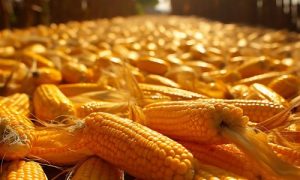Don’t burn or throw away that residue fromyour failed crop

IT has been an unusual cropping season. Most dry land crops have since succumbed to the harsh
effects of the prevailing El Nino-induced drought at their various stages of growth.
And the blazing drought has inevitably extended its tentacles to livestock where it is wreaking havoc,
especially in the country’s perennially dry regions where forage is always difficult to find.
So heart-broken are the bulk of farmers surviving on rain-fed agriculture that some may even consider
gathering the dry crop residue and burn it. Some have gone to the extent of ploughing it into the
ground to make sure the painful reminder of the failed season is not always there to madden them
each time they cast their glances in the direction of their fields.
Of course, it has always been a bitter pill to swallow for the farmer to just accept that her crop has
failed and move on to find ways of making the best out of the situation or at least salvage something
positive.
In this case, the residue from the failed crop can at least be used for something productive in the nottoo-distant future.
Today’s offering will try to explore some of the ways in which farmers can deal with the crop residue
currently littering their fields after the rains abandoned the crops to die a premature death.
There is this group of farmers that will decide to set the residue on fire to clear their fields.
This option comes with some negative impact on the environment and on the soil as well. Burning
crop residues increases the soil temperatures to undesirable levels in most cases and decimates soil
micro-organisms to a depth of about 2, 5 centimetres.
Read more: https://www.herald.co.zw/dont-burn-or-throw-away-that-residue-from-your-failed-crop/
















